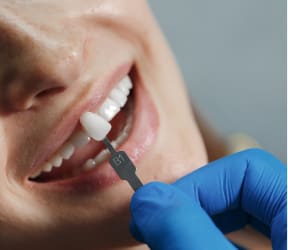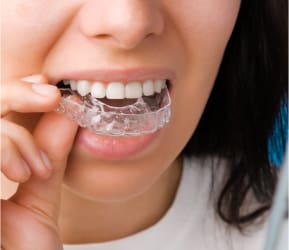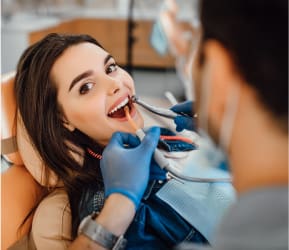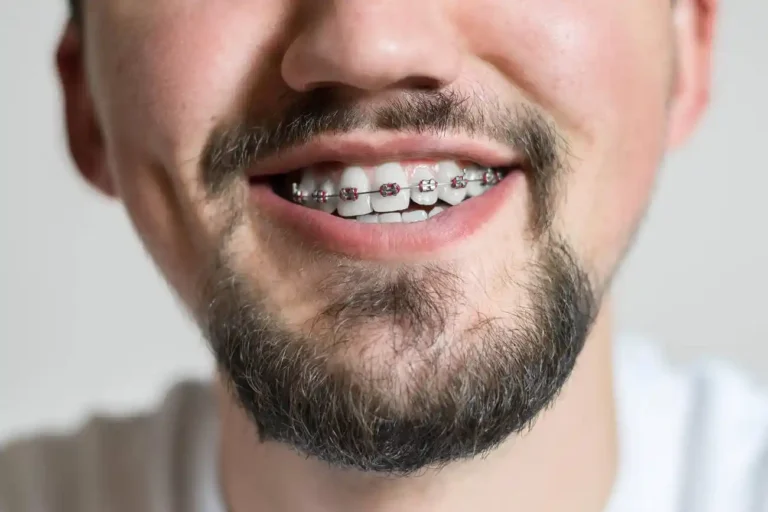How a Palate Expander (Palatal Expander) Can Correct Dental Issues
Rodrigo F. Viecilli, DDS, PhD
Orthodontist Austin TX

DECEMBER 21, 2023
Introduction to Palatal Expanders
Palatal expanders are specialized orthodontic appliances used to address several dental issues related to the upper jaw, especially in children and adolescents. Their primary function is to correct transverse deficiencies by acting as an orthodontic expander appliance to the upper arch of the mouth. This treatment is crucial for resolving conditions like crowded teeth, crossbites, impacted teeth, and sometimes breathing difficulties related to narrow palates.
—
What is a Palatal Expander?
A palatal expander, also known as a rapid palatal expander (RPE), is designed to apply gentle, yet consistent pressure on the two halves of the whole upper jaw and lower jaw together. This gentle pressure stimulates the growth of new bone in the gap created and gradually widens the whole upper jaw and lower jaw together. The device typically consists of two metal parts connected by a screw and is attached to the whole upper jaw and upper teeth and molars or permanent teeth.
—
Types and Mechanism of Palatal Expanders
The mechanics of the palatal expansion and expanders rely on the principle of applying force to the two palatal bones together, encouraging them to move apart and widen the two upper jaw and lower jaw together. The most common types of palatal expansion and expanders include:
1. Rapid Palatal Expander (RPE): This conventional device is attached to the upper molars and is adjusted by turning a tiny screw around in the center of upper arch. It’s primarily used in younger patients whose palatal suture hasn’t fully fused. These can come in several forms, such as a rapid palate expander and palatal expander alone, a Hyrax and palatal expander hurt, a Haas and palatal expander alone, and a mini-expander. They can all be based on metal bands or 3d printed semi-crowns, which is the latest technology we use at Limestone Hills Orthodontics.
2. Miniscrew-Assisted RPE (MARPE): These advanced devices use mini-implants for anchorage. They are suitable for adults and older children and adolescents over 15 years of age (females) or over 18 years (males). They induce more skeletal changes with minimal dental alterations.
3. Bone-Borne Expanders: Supported entirely by miniscrews, these palate expanders are effective in cases with unilateral cleft palate, in adults and late adolescence, offering targeted skeletal changes.
The Process of Impression or Scan and Placement of Separators
Impression and Digital Scan
The traditional process of creating a palatal palate expander begins with an impression of teeth in the patient child’s upper jaw first. This impression of teeth is crucial for designing the new palate expander, an appliance that fits perfectly between the canine or eye teeth below. However, this process can be uncomfortable, especially for younger children, as it involves placing a tray filled with teeth impression material into the child’s mouth.
Advancements in orthodontic technology have introduced digital scanning, a more comfortable and efficient alternative. Digital scanners create a precise 3D model of the patient’s teeth and jaws without the need for traditional impression materials. This process is not only more comfortable for the patient but also provides more accurate data for the creation of orthodontic appliances.
Placement of Spacers or Separators
Before fitting metal bands around top teeth, which are a component of many palatal expanders, orthodontists often place separators between the teeth. These separators are small elastic rings or metal spacers between lower teeth and upper teeth, that create enough space between other teeth for the metal bands to be fitted around the molars. While necessary, the placement of separators can cause discomfort or a feeling of pressure for a few days as the front teeth may move slightly apart.
Dealing with Pain from Separators
The discomfort from separators is usually mild and minor discomfort can be managed with over-the-counter pain relievers. It’s also important for patients to avoid sticky or hard foods that could dislodge the separators. If the pain persists or becomes severe, it’s advisable to contact the orthodontist.
Advantages of 3D Printed Appliances and Digital Scans
Our clinic’s use of 3D printed appliances and digital scans significantly enhances the patient experience. The precision of 3D printing ensures that the expanders fit comfortably and effectively, reducing the need for adjustments and repeat visits. Moreover, the digital scan process eliminates the discomfort associated with traditional impressions, making the initial phase of treatment more pleasant for patients.
The digital workflow allows for more accurate placement of the bands and expander, ensuring optimal results. This approach not only improves patient comfort but also enhances the overall effectiveness of the whole treatment plan.
The transition to digital orthodontics, with 3D printed appliances and digital scanning, represents a significant improvement in patient comfort and treatment accuracy. These advancements simplify the process of fitting palatal expanders, reduce discomfort, and streamline the entire early orthodontic treatment experience. As technology continues to evolve, early orthodontic treatment treatments become more patient-friendly and efficient, ensuring better outcomes and higher satisfaction.
Digital Workflow in Palatal Expander Fabrication
Advancements in digital technology have significantly improved the precision in the fabrication of palatal expanders. Digital workflows involve creating a virtual model of the patient’s mouth, followed by 3D printing a resin model with the palatal expander work within. This approach ensures the device is perfectly tailored to the patient’s dental structure, improving effectiveness and comfort.
Effectiveness and Clinical Outcomes
Recent clinical trials have demonstrated the effectiveness of both traditional RPEs and MARPEs in treating maxillary transverse deficiencies. MARPEs, in particular, have shown greater potential in inducing skeletal changes, especially in adolescent patients. The use of low-dose Cone Beam Computed Tomography (CBCT) imaging has been instrumental in assessing these changes while minimizing radiation exposure. A great outcome of palatal palate expanders work is that because the palate is also the base of the nasal cavity, you can have palate expanders used to widen the volume available for nasal breathing, which can be helpful for mouthbreathing patients.
Palate Expanders, Airway Improvevement, Snoring and Sleep Apnea: an overall improvement in quality of life, physical and mental capacity
The relationship between orthodontic palatal expanders and their impact on airway issues, including snoring and sleep apnea, is a subject of increasing interest within the field of orthodontics. A comprehensive examination of the literature, including articles from The Angle Orthodontist and American Journal of Orthodontics and Dentofacial Orthopedics among other peer-reviewed publications, reveals several key insights.
Palatal Expanders and Airway Improvement
Palatal expanders are traditionally used to correct dental crowding and bite problems by gradually widening the maxillary bones of the upper jaw. This widening can also have a positive effect on the airway. By expanding the maxillary arch, palatal expanders can increase the volume of the nasal cavity and upper airway, potentially improving breathing during sleep.
Impact on Sleep Apnea and Snoring
Obstructive Sleep Apnea (OSA) is a condition where the airway is partially or completely blocked during sleep, leading to breathing interruptions. Snoring, a common symptom of OSA, occurs due to the vibration of soft tissues in the throat. Palatal expanders can help reduce these symptoms in some patients by enlarging the upper airway space, thus decreasing airway resistance and improving airflow.
Clinical Evidence
Studies, such as those referenced in Evidence-Based Dentistry and Bauer Smiles, have explored the effectiveness of surgically assisted and miniscrew-assisted rapid palatal expansion in adults with OSA. These studies suggest that such interventions can lead to improvements in sleep apnea symptoms. For instance, surgically assisted rapid maxillary expansion has shown positive effects on obstructive sleep apnea in adults, highlighting the potential of palatal expansion in managing sleep-related breathing disorders.
Early Orthodontic Intervention
Early orthodontic treatment, particularly in children, can be pivotal. The use of palatal expanders in younger children who are still growing can not only create room for crowded teeth but also increase airflow, thus potentially reducing the risk of developing sleep-related breathing disorders like sleep apnea.
Importance of Comprehensive Diagnosis
The role of 3D imaging in diagnosis, as noted by Bauer Smiles, is crucial. With advanced imaging techniques, orthodontists can assess airway dimensions and structure more accurately, aiding in the diagnosis of airway issues and the formulation of a more effective treatment plan.
Key points
The use of palatal expanders in orthodontics extends beyond just dental corrections; it can significantly impact the airway, potentially improving conditions like sleep apnea and snoring. However, the effectiveness of this treatment varies among individuals, and a comprehensive diagnosis is essential. For patients experiencing sleep-related breathing disorders, consultation with an orthodontist, possibly in conjunction with a sleep specialist, is advisable to determine the most appropriate treatment approach.
Impact on Speech and Comfort
The initial use of palatal and palate expanders often can temporarily impact speech and oral comfort. However, these effects are generally short-lived, and patients adapt to palate expanders over time. In some cases, interdisciplinary collaboration with speech pathologists may be beneficial to assist with adjustments in tongue placement and speech sound production.
Parental Satisfaction
Parental satisfaction with their children’s orthodontic care and treatment, including the use of palatal expanders, is an important aspect. Factors such as the quality of care, duration of treatment, and the convenience of the orthodontic practice play a significant role in overall satisfaction. Parents often appreciate prompt responses to their queries, respectful treatment, and modern, well-located offices.
—
Conclusion
Palatal expanders (or palate expanders), are a cornerstone in orthodontic treatment for children and adolescents. They play a crucial role in correcting dental issues related to narrow palates and ensuring the proper alignment of teeth. The choice of the palatal removable palate expander type and the full treatment plan and protocol should be based on individual patient needs, considering factors such as age, severity of the dental issue, and desired outcomes. With ongoing technological advancements, particularly in digital planning and manufacturing, the effectiveness and comfort of these devices continue to improve.
Consultation with oral surgeon or a professional orthodontist is recommended for a personalized orthodontic treatment and plan. The field of orthodontics is dynamic, with continuous advancements ensuring optimal patient care.
—
This expanded article integrates information from various peer-reviewed sources, including BMC Oral Health and Frontiers in Dentistry, providing a detailed overview of palatal expanders.
Also Worth Checking Out
JAN 15, 2024
Spacers for Teeth: Orthodontic Spacers or Separators Explained
DEC 28, 2023
Mastering IPR Orthodontics: A Comprehensive Guide to Safe Enamel Reduction
DEC 26, 2023
Understanding Overbite: Causes, Consequences, and Correction Strategies

Also Worth Checking Out
Love Your Care, Love Your Smile
You’ll love our beautifully relaxing office almost as much as you’ll love your final results. Experience just how relaxing the care of a top contender for best orthodontist in Austin can be — make a telephone call or schedule your free consultation directly on our website to get started.






